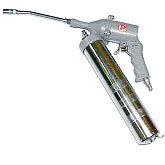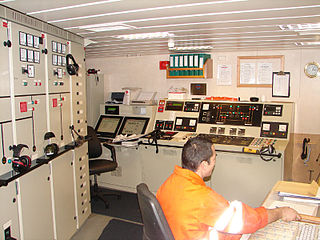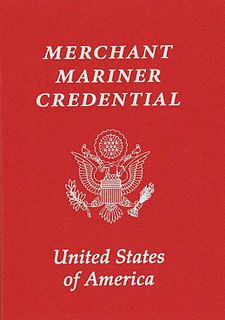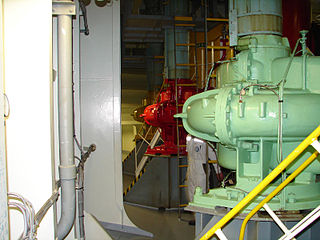This article needs additional citations for verification .(July 2010) (Learn how and when to remove this template message) |

An oiler (also known as a "greaser") is a worker whose main job is to oil machinery. In previous eras there were oiler positions in various industries, including maritime work (naval and commercial), railroading, steelmaking, and mining. Today most such positions have been eliminated through technological change; lubrication tends to require less human intervention, so that workers seldom have oiling as a principal duty. In the days of ubiquitous plain bearings, oiling was often a job description in and of itself.

Lubrication is the process or technique of using a lubricant to reduce friction and/or wear in a contact between two surfaces. The study of lubrication is a discipline in the field of tribology.

A navy or maritime force is the branch of a nation's armed forces principally designated for naval and amphibious warfare; namely, lake-borne, riverine, littoral, or ocean-borne combat operations and related functions. It includes anything conducted by surface ships, amphibious ships, submarines, and seaborne aviation, as well as ancillary support, communications, training, and other fields. The strategic offensive role of a navy is projection of force into areas beyond a country's shores. The strategic defensive purpose of a navy is to frustrate seaborne projection-of-force by enemies. The strategic task of the navy also may incorporate nuclear deterrence by use of submarine-launched ballistic missiles. Naval operations can be broadly divided between riverine and littoral applications, open-ocean applications, and something in between, although these distinctions are more about strategic scope than tactical or operational division.

Rail transport is a means of transferring of passengers and goods on wheeled vehicles running on rails, also known as tracks. It is also commonly referred to as train transport. In contrast to road transport, where vehicles run on a prepared flat surface, rail vehicles are directionally guided by the tracks on which they run. Tracks usually consist of steel rails, installed on ties (sleepers) and ballast, on which the rolling stock, usually fitted with metal wheels, moves. Other variations are also possible, such as slab track, where the rails are fastened to a concrete foundation resting on a prepared subsurface.
Contents
Today, shipping is the economic segment that most thoroughly retains the notion of the oiler as a separate position. On a merchant ship, an oiler is an unlicensed rate of the engineering department. The position is of the junior rate in the engine room of a ship. The oiler is senior only to a wiper. Once a sufficient amount of sea time is acquired, the Oiler can apply to take a series of courses/examinations to become certified as an engineer.
As a member of the engineering department, the oiler operates and maintains the propulsion and other systems on board the vessel. Oilers also deal with the "hotel" facilities on board, notably the sewage, lighting, air conditioning, and water systems. They assist bulk fuel transfers and require training in firefighting and first aid. Moreover, oilers help facilitate operation of the ship's boats and other nautical tasks – especially with cargo loading/discharging gear and safety systems. However, the specific cargo discharge function remains the responsibility of deck officers and deck workers.

Sewage is a type of wastewater that is produced by a community of people. It is characterized by volume or rate of flow, physical condition, chemical and toxic constituents, and its bacteriologic status. It consists mostly of greywater, blackwater ; soaps and detergents; and toilet paper.
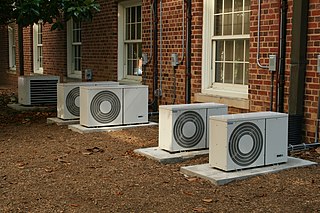
Air conditioning is the process of removing heat and moisture from the interior of an occupied space, to improve the comfort of occupants. Air conditioning can be used in both domestic and commercial environments. This process is most commonly used to achieve a more comfortable interior environment, typically for humans and other animals; however, air conditioning is also used to cool/dehumidify rooms filled with heat-producing electronic devices, such as computer servers, power amplifiers, and even to display and store some delicate products, such as artwork.

Firefighting is the act of attempting to prevent the spread of and extinguish significant unwanted fires in buildings, vehicles, woodlands, etc. A firefighter suppresses fires to protect lives, property and the environment.

